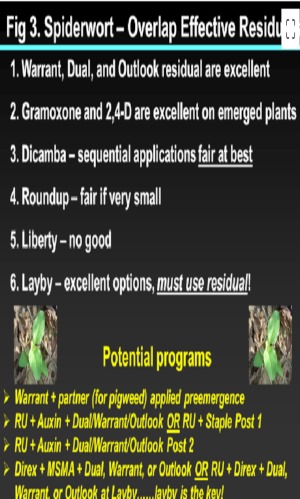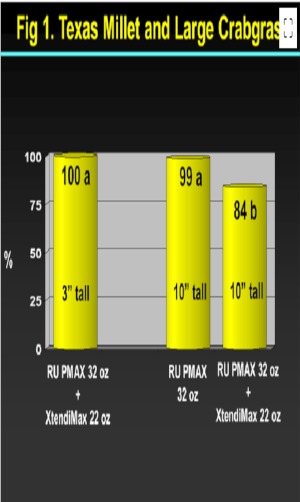By Jeremy M. Kichler
Growers are trying to finish planting their cotton and peanut crops. The corn crop ranges from V10 to early pollination, and the peanut crop ranges from just planted to about 40 days old. The weather has not been optimal for herbicide applications to cotton and peanuts. Drier weather is in the immediate forecast. The cooler weather has been nice over the last few days.
Corn: Last Friday (May 26, 2023), common rust (Puccinia sorghi) was found in corn that was in the VT stage in Colquitt County. The local corn crop ranges from V10 to early pollination.
What does Dr. Bob say about the current corn disease situation?
To date, UGA Extension does not know of ANY southern rust (or soybean rust) in Georgia or in bordering areas of Alabama or Florida, though I am sure there is some somewhere. The hunt continues….
SO, WHAT DO WE TELL GROWERS- I have told you many times, “Corn Growers, especially under irrigated conditions and those with good yield potential, should have their finger firmly on the fungicide trigger and begin to slowly apply pressure as tassel growth stages approaches. If disease, especially southern rust, is known to be in the area, I would squeeze the trigger. I have that much respect for southern rust. However, if southern rust is not found, or conditions are not favorable, I would take my finger off the trigger and wait until rust is found.”
So what does that mean now? Our earliest planted corn is already silking and pollinating. That corn and corn approaching tassel is at key growth stages for decisions on use of a fungicide. No southern rust has been found; however conditions are generally favorable for development of southern rust (HOWEVER our current cool conditions will help to slow any development for a few more days..)
My recommendations:
- Growers not at tassel can certainly wait for a fungicide application.
- Growers at tassel or silking or pollinating stages can wait to make a fungicide application until southern rust is more of a threat (that is when we find it…).
- SOME corn growers do not want to take the risk of a) the first find of southern rust being missed OR b) having to scramble to make a fungicide application and hire a plane when everyone around them wants to spray also. These farmers will often decide to spray now. I can’t disagree with their logic.
- Under current “lower risk” situation, use of a single mode of action triazole like Tilt of Domark or Tebuconazole is less expensive, generally appropriate, and will have a protective window of about 2 weeks. These fungicides are fair to good on southern rust, but less effective against northern and southern corn leaf blights.
- Under current “lower risk” situation, use of mixed products, ANY product that mixes a triazole + strobilurin, or triazole + SDHI, or SDHI + Strobilurin, or triazole + strobilurin + SDHI will provide 3 weeks of protection, better activity against rust, and better activity against corn leaf blights, but will be more expensive.
- WHEN southern rust is a clear and present threat, choice of TOP fungicides for control (Things like Trivapro, Headline AMP, Veltyma, and others) becomes prudent. More when we get to that point.
Final Using Pesticides Wisely (UPW) Training – Georgia 2023:
If you missed any of the Dicamba trainings back in the spring, the GA Dept. of Ag is giving everyone ONE FINAL CHANCE to complete this training for 2023.
As mandated by federal labels, Georgia applicators must complete the 2023 UPW classroom training before using the restricted use herbicides Engenia, XtendiMax, and Tavium. We are offering one final opportunity for attending this required training in 2023 at the following location:
UGA Tifton Campus Conference Center
15 RDC Road, Tifton, GA 31793
June 8th
1:30-3:00 pm.
Bring your pesticide license; 2 hours of pesticide credit for private or commercial will be offered. Attendees’ names will be placed on a list posted to the Georgia Department of Agriculture’s auxin website at https://agr.georgia.gov/dicamba; this link is different than in previous years!
You do not need to RSVP for this event. Please contact Jenny Wren at (404) 656-4958 or
jennifer.wren@agr.georgia.gov for more information.
Tropical Spiderwort management in cotton and peanuts… I have been seeing tropical spiderwort emergence in cotton and peanuts over the last several weeks. According to Dr. Stanley Culpepper, Dual Magnum and Warrant (Outlook and Zidua may be equally effective but more research is needed to confirm) offer the greatest level of residual control in cotton; well-placed residual herbicides are the key to a successful spiderwort management program. Paraquat, Roundup + Aim, Roundup + 2,4-D, Roundup + dicamba (two applications that must begin with 3 inch or smaller spiderwort), Roundup + Staple, and Direx + MSMA offer the greatest opportunity to control emerged plants. The addition of residual herbicides in conjunction with these POST treatments will be needed. Liberty is not effective; Roundup actually provides better control than Liberty.

Dr. Prostko has provided herbicide programs for the control of tropical spiderwort in peanut. This information is provided in the UGA Pest Management Handbook.
SUGGESTED HERBICIDE PROGRAMS FOR THE CONTROL OF TROPICAL SPIDERWORT (BENGHAL DAYFLOWER) IN PEANUT***
PROGRAM 1
a) PRE Immediately After Planting: Valor at 3 oz/A + Dual Magnum 7.62EC or generic metolachlor
(Stalwart, Parallel PCS, Me-Too-Lachlor) at 1 pt/A or Warrant 3ME at 3 pt/A or Outlook 6EC @ 12.8 oz/A and
b) POST when spiderwort is 1–2″ tall: Cadre/Impose 2AS at 4 oz/A or Strongarm 84WG at 0.45 oz/A + Dual Magnum 7.62EC or generic metolachlor (Stalwart, Parallel PCS, Me-Too-Lachlor) at 1 pt/A or Warrant 3ME at 3 pt/A or Zidua 4.17SC @ 2.5 oz/A or Anthem Flex 4SC @ 3 oz/A or Outlook 6EC @ 12.8 oz/A.
* At plant applications of Dual/Warrant/Outlook are more effective for TSW/BD control at later peanut
planting dates (May 15 or later) because the majority of emergence occurs after June 1.
PROGRAM 2
a) AT-CRACK (within 28 days after peanut cracking): Apply paraquat 2SL formulations at 12 oz/A A or paraquat 3SL formulations a t 8 oz/A Storm 4EC at 16 oz/A or Basagran 4EC @ 8 oz/A + Dual Magnum 7.62EC or generic meto-lachlor (Stalwart, Parallel PCS, Me-Too-Lachlor) at 1 pt/A or Warrant 3ME at 3 pt/A or Zidua 4.17SC @ 2.5 oz/A or Anthem Flex 4SC @ 3 oz/A or Outlook 6EC @ 12.8 oz/A and
b) POST (~2–3 weeks after at-crack spray): Apply Cadre/Impose 2AS at 4 oz/A or Strongarm 84WG at 0.45 oz/A + Dual Magnum 7.62EC or generic metolachlor (Stalwart, Parallel PCS, Me-Too-Lachlor) at 1 pt/A or Warrant 3ME at 3 pt/A or Zidua 4.17SC @ 2.5 oz/A or Anthem Flex 4SC @ 3 oz/A or Outlook 6EC @ 12.8 oz/A.
* When using Dual Magnum/generics or Outlook in combination with Cadre/Impose, paraquat, or Strongarm, additional spray adjuvants (NIS, COC) are not necessary.
The maximum amount/A/year of Dual Magnum that can be applied is 2.8 pt/A. The maximum
amount/A/year of Stalwart, Parallel PCS, or Me-To-Lachlor that can be applied is 2.66 pt/A.
The maximum amount of Warrant that can be applied PRE + POST is 6 pt/A/year.
Maximum amount of Zidua that can be applied is 4 oz/A/year of 85WG or 6.5 oz/A/year of 4.17SC.
When Warrant or Zidua is applied POST, a NIS (0.25% v/v) is needed.
Maximum amount of Outlook that can be appplied is 21 oz/A/year (i.e. 2 applications at 10.5 oz/A).
Maximum amount of Anthem Flex that can be applied is 9.12 oz/A/year.
** Zidua/Anthem Flex should not be applied prior to peanut emergence due to potential injury
concerns.
*** Twin rows and conventional tillage (plowing) are also useful for the management of tropical spiderwort/Benghal dayflower
Managing Grasses in a Dicamba System
In the last couple of years, I have received more questions about managing grasses in a dicamba system. According to Dr. Culpepper, reduced grass control, especially goosegrass, occurs with nearly every Roundup + dicamba application when grasses are > 4″ and goosegrass > 1″, when treated (Fig. 1). Be timely (Fig. 2) or make sequential applications.

Bermudagrass stem maggot.. I have been picking up low amounts or bermudagrass stem maggot in some area bermudagrass hay fields. Growers need to monitor populations over the next few weeks.
If you have any questions please contact your local county Extension agent and thank you for your time. Have a great week.
Source : uga.edu